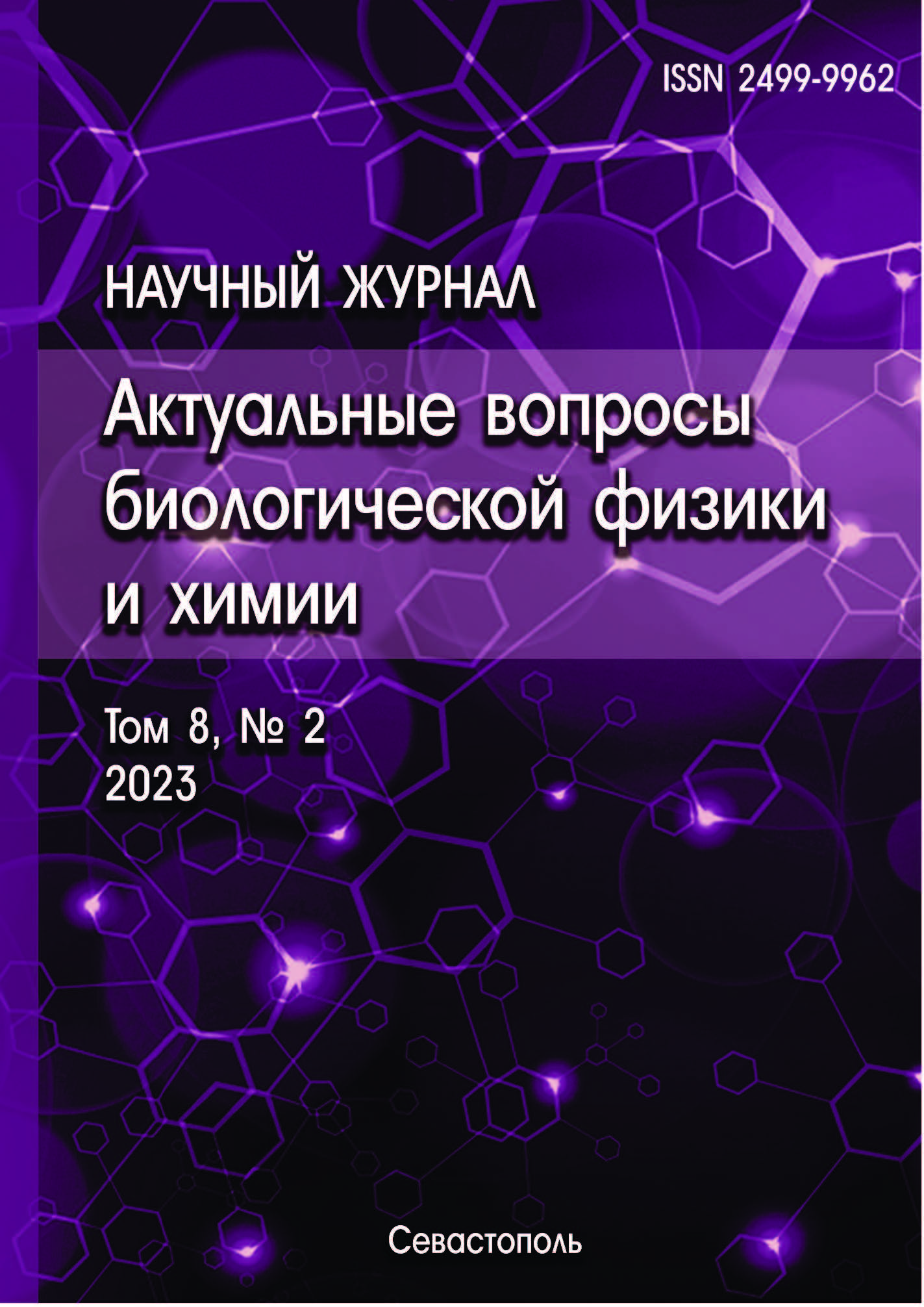Moscow, Moscow, Russian Federation
Moscow Pedagogical State University
Moscow, Moscow, Russian Federation
Moscow Pedagogical State University (Institute of Biology and Chemistry)
N.M. Emanuel Institute of Biochemical Physics of Russian Academy of Sciences
Moscow, Moscow, Russian Federation
This work presents a method for producing new hybrid supramolecular organic-inorganic systems based on tetrapyrrole compounds (natural and artificially synthesized porphyrins) and hexamolibdenonicelate anion to create highly ordered supramolecular complexes based on porphyrins with the possibility of using them in medicine. In particular, the reaction of natural porphyrin (hemin) and the ZnII-complex of tetra(4-pyridyl)porphyrin with the heteropoly compound sodium hexamolibdenonicelate crystalline hydrate Na4[Ni(OH)6Mo6O18]·8H2O in an aqueous medium is considered. This heteropoly compound due to its physicochemical and biological properties can be considered as a part of photochromic materials and pharmacological agent. The optical absorption spectra of the obtained hybrid supramolecular organic-inorganic systems were investigated with the help of electronic absorption spectroscopy. Both the transformation of the bands which are the characteristics of porphyrins and the appearance of new bands indicating the formation of hybrid supramolecular organic-inorganic complexes are observed in the electron absorption spectra. The work traces the role of structural features of porphyrins in the process of their interaction with the heteropolyanions. Differences in the spectral behavior of the two metalloporphyrins when interacting them with the heteropoly compound have been shown and explained by variability in their structure. The data obtained will be useful when developing new hybrid materials as antibacterial components for medical use.
heteropoly compounds, porphyrins, electron absorption spectra, aqueous-organic medium, aggregation
1. Yoshida S., Niiyama H., Echigoya E. Reduction of heteropoly compounds with hydrogen. Roles of countercations. The Journal of Physical Chemistry, 1982, vol. 86, no. 16, pp. 3150-3154.
2. Lukyanets E.A., Nemykin V.N. The key role of peripheral substituents in the chemistry of phthalocyanines and their analogs. Journal Porphyrins Phthalocyanines, 2010, vol. 14, pp. 1-40, doi:https://doi.org/10.1142/S1088424610001799. EDN: https://elibrary.ru/MXKBDF
3. Klimenko I.V., Astakhova T.Yu., Timokhina E.N., Lobanov A.V. Dimerization of aluminum phthalocyanine in organic and water-organic media. Russian Journal of Biological Physics and Chemisrty, 2022, vol. 7, no. 2, pp. 230-234 (In Russ.). DOI: https://doi.org/10.29039/rusjbpc.2022.0507; EDN: https://elibrary.ru/TGUIMP
4. Tyubaeva P., Varyan I., Lobanov A., Olkhov A., Popov A. Effect of the Hemin Molecular Complexes on the Structure and Properties of the Composite Electrospun Materials Based on Poly(3-hydroxybutyrate). Polymers, 2021, vol. 13, no. 22, no. 4024, doi:https://doi.org/10.3390/polym13224024. EDN: https://elibrary.ru/NXRHBX
5. Nunes S.M.T., Sguilla F.S., Tedesco A.C. Photophysical studies of zinc phthalocyanine and chloroaluminum phthalocyanine incorporated into liposomes in the presence of additives. Brazilian Journal of Medical and Biological Research, 2004, vol. 37, no. 2, pp. 273-284, doi:https://doi.org/10.1590/S0100-879x2004000200016. EDN: https://elibrary.ru/MCGRGL
6. Kitushina E.V., Klimenko I.V., Gruznov D.V., Gruznova O.A., Popov N.I., Alieva Z.E., Stepanova S.P., Stepnova A.F., Kaziev G.Z., Lobanov A.V. Antiseptic properties of hemin in the composition of polymeric materials. Collection of abstracts of the Eighth Interdisciplinary Conference "Molecular and Biological Aspects of Chemistry, Pharmaceutics and Pharmacology", M.: Pero, 2023, 288 p. (In Russ.).
7. Oreshkina A.V., Kaziev G.Z., Glazunova T.Yu. Synthesis and study of acid hexamolybdenum metallates (III) with nickel-ammonia cation. Journal inorganic Chemistry, 2008, vol. 53, no. 10, pp. 1662-1666 (In Russ.). EDN: https://elibrary.ru/JRFSEB
8. Figurnov V.A. RF patent "Method for obtaining hemin" no. 2045267, 1995 (In Russ.).










